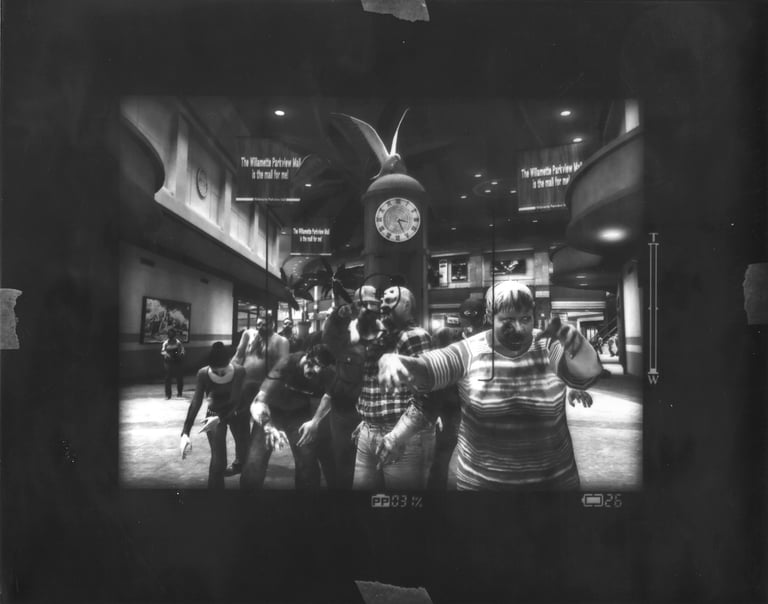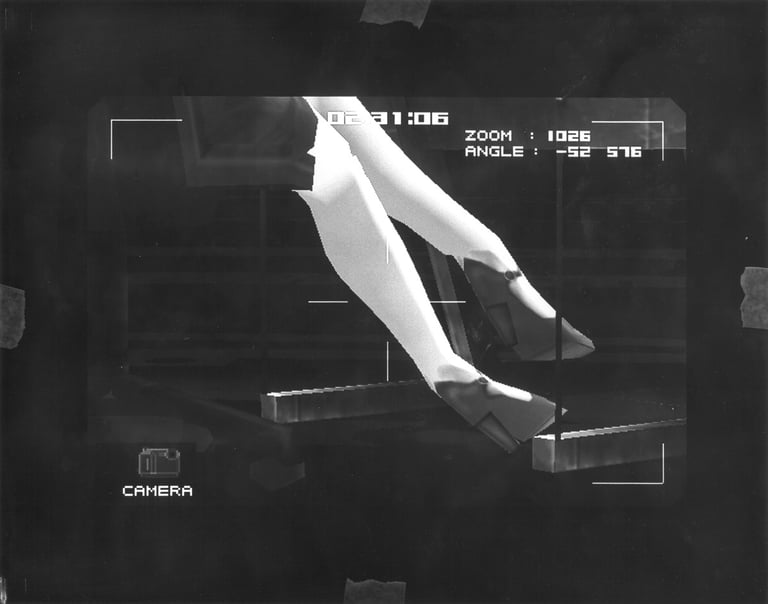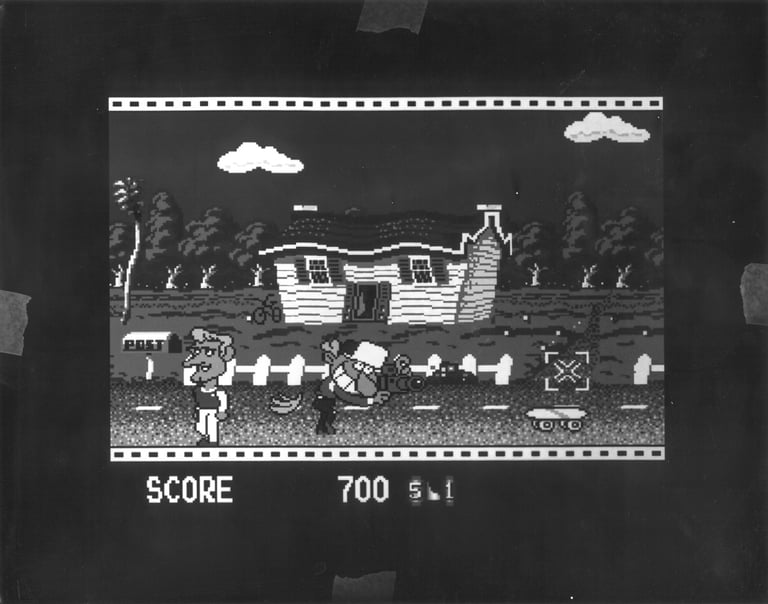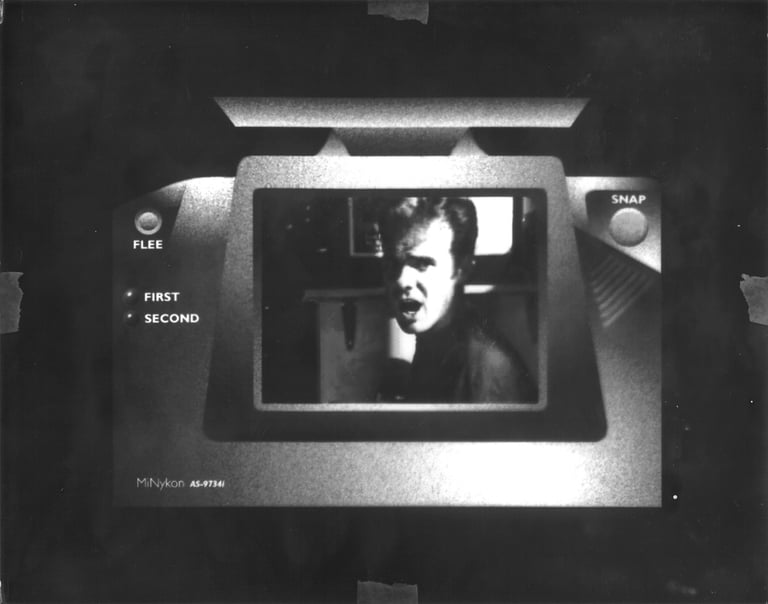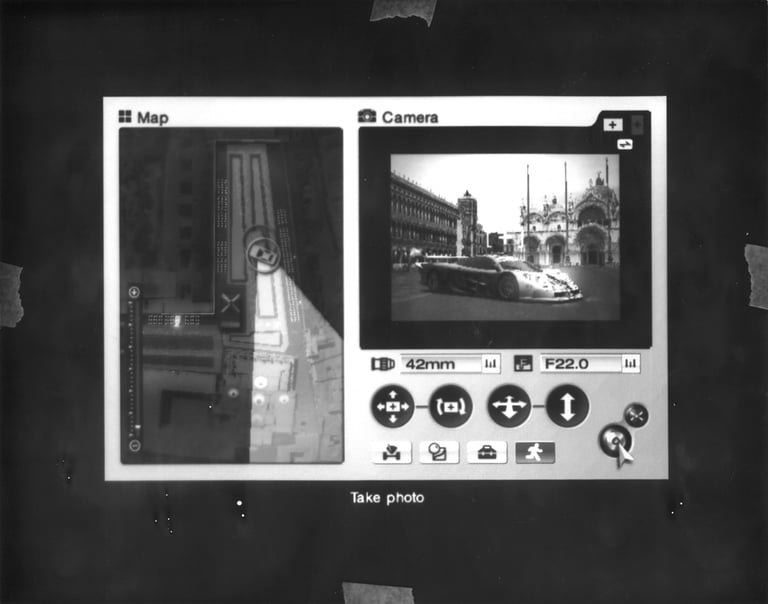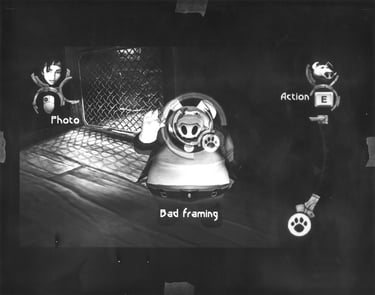Manual 4.26.
2024 – …
Virtual Photography
Heliography
20 × 30.5 cm
Manual 4.26. reworks 26 images from videogame manuals using heliography, one of the earliest photographic printing techniques. From early virtual photo safaris to photorealistic open worlds, the project traces how photography is embedded in the history of video games and becomes a tool for interacting with digital environments. Game manuals appear here as vernacular “databases” of visual instructions, while the reference to Niépce’s View from the Window at Le Gras links the origins of photography to its playful, digital afterlives.
Manual 4.26. is a series of 26 images sourced from video games and meticulously recreated by artist Maxim Zmeyev using one of the earliest photographic printing techniques: heliography. The project explores the relationship between virtual imagery and analogue photography through landmark games from 1979 to the present, selected for their photographic mechanics and the way they integrate photography into gameplay, narrative, or puzzle-solving.
By faithfully reproducing images taken from game manuals and guides, Manual 4.26. questions notions of authorship and originality. Following strict instructions, the artist steps back into the role of an executor and leaves the interpretation of the result to the viewer. The work is rooted in the tradition of vernacular photography — utilitarian, documentary images such as technical manuals, family albums or ID photographs. Screenshots from game manuals, designed to illustrate functions and controls, belong to the same logic. Appropriating them and transferring them into the field of heliography reveals their hybrid status: at once banal and carefully constructed, somewhere between documentation, tutorial and simulation.
From early titles such as Safari (1979), which stages a photo safari in Africa where the player’s “lives” are represented by local guides lost one by one with each dangerous move, to contemporary games with photorealistic graphics like Red Dead Redemption 2 (2018), still one of the most important platforms for in-game photography, the photographic medium steadily expands the ways players can interact with games. Across genres – from indie projects to AAA blockbusters – taking a picture becomes a way to solve puzzles and advance the story, fight ghosts, steal classified material, document endangered animal species, imitate the life of a paparazzo, work through a heroine’s psychological crises, investigate murders, study foreign languages, or simply learn to notice beauty in the surrounding world.
These manual images always already exist inside the “window” of an interface – a screen, a frame, a control diagram – which directly leads back to the metaphor of the window in the history of photography. Niépce’s famous View from the Window at Le Gras (1826), the earliest known photograph, fixed reality through an opening. In a similar way, videogame screens act as digital windows framing virtual worlds. This analogy builds a bridge between the origins of photography and its digital extensions, emphasising a continuity of photographic practice across historical periods.
Ideas by Lev Manovich and Alexander Galloway further inform the project. For Manovich, databases structure digital visual culture: game manuals function here as databases of visual instructions. For Galloway, algorithmic culture defines interactions: by mechanically following the games’ instructions, the artist extends this logic, transferring digital procedures into a material medium — heliography.
The technical choice underlines the contrast between dematerialised screenshots and the slow, physical process of heliography, which requires actual exposure to sunlight. Whereas in-game photography mobilises neither light nor material support, heliography reintroduces the physical presence of the image and reactivates its sensory grounding. Mark B. N. Hansen’s reflections on embodied media experience resonate here: by turning digital captures into tangible objects, Manual 4.26. restores a tactile, contemplative dimension and encourages a more intimate, slower relationship to these images.
By re-evaluating utilitarian images from video games through an ancestral technique, the project questions how vernacular images circulate and accrue value within digital culture. Manual 4.26. thus revisits the history of photography and the role of the artist in the face of technological change, exploring the intersections between documentation, simulation and creation in virtual worlds.

